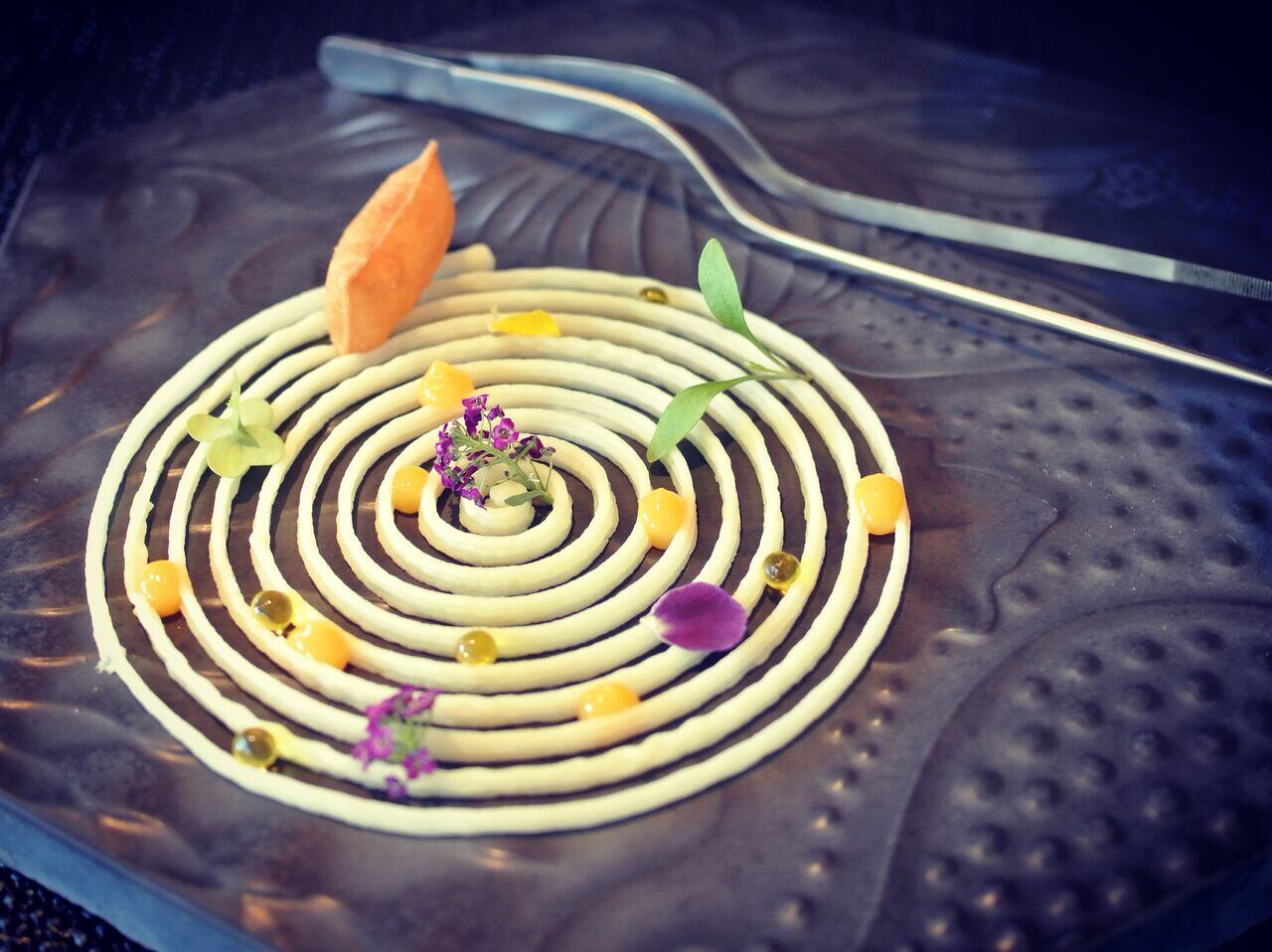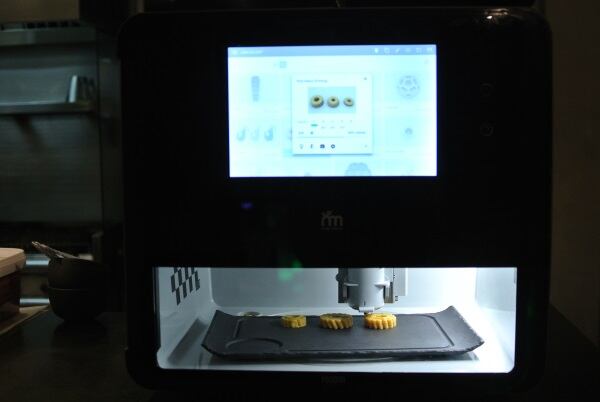While 3D printers have been in existence since the 1980s it is only in recent years that the technology’s popularity has grown and the food sector has begun to look seriously at its uses. In particular, it is thought that 3D printers will be used to drive the next wave of personalisation in food manufacturing, producing shapes, textures, tastes and forms that were previously too challenging for mass production.
However, one company believes that in the hands of consumers, 3D printing could act as a disruptor for the packaged food industry.
Natural Machines was founded four years ago and the company is now on its first production run for “early access users” to get its Foodini 3D printer.

At US$4000 per unit, Foodini has not reached the tipping point of – say – a microwave oven, where it is produced cheaply and en mass, becoming a feature in virtually every kitchen. Natural Machine’s first buyers are primarily industrial customers, who see the potential to create exquisite and detailed culinary creations for high-end restaurants. But this is not the future Natural Machines envisages for Foodini.
“We believe that in ten to 15 years, 3D food printers will become a common kitchen appliance in both home and professional kitchens, similar to how an oven, or a microwave, or a dishwasher, or blenders are common appliances in kitchens today,” Kucsma tells FoodNavigator.
“A number of electronic devices – including electric cars, cell phones and flat-screen TVs – became more affordable over time as underlying technology and manufacturing capabilities advance. We foresee the same path with our 3D food printers. In the future we will offer multiple models of 3D food printers with different features at different price points, so there will be a 3D food printer that is right for each individual’s needs.”
Disruptive potential
Kucsma believes that 3D printing tech that is affordable and easily available has the potential to disrupt how people interact with food.
“3D food printing is not that crazy of an idea when you think about it like this: the premise of all 3D printers is the user becomes the manufacturer, maker or creator. The same concept applies with Foodini: users become the manufacturer and control the ingredients going into printed foods.
“If you eat anything from a food manufacturer - like packaged food you buy in a supermarket - then you practically are already eating 3D printed food. A food manufacturer takes food, pushes it through machines, shapes it, forms it. We’ve taken that same concept and shrunk the large food manufacturing facility down to a stylish appliance for your kitchen counter. But the big difference is we allow you to use your own fresh ingredients to print.”
In this way, Kucsma suggested that 3D printing fits into some important trends that are shaping the packaged food sector today, such as growing demand for natural and healthy food.
“If you think about Foodini as a kitchen appliance, then you can see that we will target mainstream consumers as well. We envision that Foodini will be used on a daily basis - perhaps even several times a day - and not just reserved for special occasions. How often do people used packaged food each day? Foodini can replace a lot of those packages of food and consumers can print their own fresh versions. Although of course, with Foodini's capabilities, it can indeed be used for special occasions as well... similarly to how Foodini is currently used in Michelin star ranked restaurants today.”
Consumers are increasingly engaging with their food and home-cooking is gaining popularity. This has to be tempered against busy modern lifestyles and the need for convenience, however. Here Foodini can be part of the solution, Kucsma claimed.
“It actually gets consumers more engaged with food. Rather than taking a package of something frozen and tossing it in the microwave, we encourage people to get back into their kitchens and prepare foods with real ingredients.
“At the end of the day, Foodini is a kitchen appliance to help people make fresh foods. We are certainly not proposing that every food you eat needs to be 3D printed, just like every food you eat now doesn't come out of an oven. A stew? You don't need a 3D printer for that. But think about foods that if you were to make by hand would require food shaping, or forming, or repetitive food assembly tasks, or layering... that's where Foodini can help. From shaping pretzels, to forming gnocchi, to layering ravioli, to forming crackers.... it's designed to help get people back into kitchens, cooking with fresh foods, and getting away from buying processed, packaged, pre-made foods. We are not designing a pill-replaces-real-food proposition.”
What makes Foodini different?
As well as being designed to look like a kitchen appliance – not a 3D printer – Foodini has a number of other distinctions from an industrial 3D food printer. Importantly, the technology has been designed for maximum versatility.

"The machine is sleek, and most of the technical moving parts are cleverly hidden from view. People will be proud to have Foodini on a kitchen counter, both from the physical design as well as the functionality. This is very different than most 3D printers on the market." - Kucsma
Kucsma believes that these specifications are rooted in the company’s mission – to change how people think about and interact with food.
“It's important to know why we made Foodini: We saw an issue with food in the food industry, and 3D food printing was the best way to solve that problem. What we did not do: take a standard 3D printer, and try to do something new and "cool" with it, like print food. Our reasons for building Foodini results in a big difference in how we built Foodini versus other 3D food printers. We use food-grade safe materials and parts to build Foodini, inclusive of the stainless steel food capsules. Foodini was designed from day one to work with food.
“Foodini is the first real food 3D printer that prints a wide range of foods, both savoury and sweet. It uses real food. Fresh food. That's different than all other 3D printers. From the day we started Foodini, we built it to be a food appliance. Meaning, it's made from food-grade/safe materials.”
Foodini’s open capsule design means that the ingredients that it can work with are not limited. Natural Machines stressed the variety of products it can prepare, from pastas to chicken or chickpea nuggets, to quiche, hash browns, cookies, crackers and cakes.
“There aren't many food printers (yet!), but the ones we know focus on a small amount of printable ingredients... printers focused on chocolate only or sugar only, for example. With our open capsule model, you aren't limited to the number of ingredients used. This allows us to accommodate for a wide range of tastes.”
